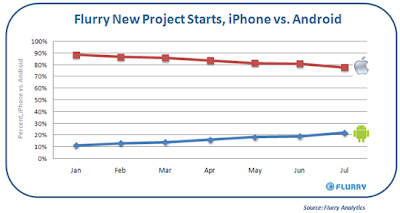I have discovered an interesting way to write zero-latency user interfaces for internet services.
It's similar in spirit to Alice ML's first-class futures,
promises.
The basic idea is that every user operation that hasn't been acked yet by the server, results in a new "possible world" in some part of the user interface, that may have to be rolled back (if the server fails, for example).
The
model (if you're a MVC person) is represented as a tree of
operands, which are basically futures, containers for variables that reside on the server. GUI widgets subscribe to operands as
listeners, and GUI
operations are represented as first-class objects that change an operand.
/** A usually high-latency action that changes the states of one or
more operands. */
interface Operation {
public String getDescription();
}
interface OperandListener<OP extends Operand> {
public void onOperandChange(OP operand);
public void onOperandFailure(OP operand);
}
/** An observable variable with a last known state (usually retrieved
from the server), and optionally a pending operation and a
tentative state (a state that the pending operation would like the
operand to have, but that hasn't been acked by the server yet).
Clients of the operand should usually just call getState(), which
returns the operand's tentative state if there is one, or the last
known state otherwise. This guarantees that the user sees an
up-to-date image of the operation's progress. (There is a danger
however, in that the tentative state of an operand may be invalid
from the client's perspective.)
There can be only one pending operation on an operand at one time,
and trying to start a new operation on an operand with a pending
operation will result in an error. */
abstract class Operand<T> {
protected T lastKnownState;
protected T tentativeState;
protected Throwable currentFailure;
protected Operation pendingOperation;
protected Set<OperandListener> listeners;
}
A GUI operation simply puts an operand in a tentative state, which locks the operand, so that it cannot be changed (by another operation) until the server has acked the change.
This means that a user can edit multiple objects on the screen, and each of these changes results in a zero-latency screen update to the new tentative state, and a background thread that tries to update the state on the server.
(I haven't implemented this yet, but it would also be possible to merge commutative operations.)


































